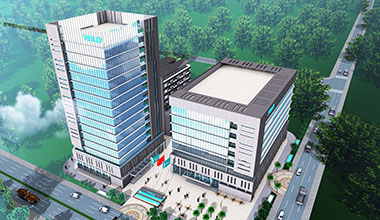World Hepatitis Day
Summary:

July 28th is the World Hepatitis Day, an opportunity to brings the world together under a single theme to step up national and international efforts on hepatitis, encourage actions and engagement by individuals, partners and the public and highlight the need for a greater global response. The theme for this year is “Hepatitis Can’t Wait”. This theme conveys the urgency of efforts needed to eliminate hepatitis as a public health threat by 2030. With a person dying every 30 seconds from a hepatitis related illness–even in the current COVID-19 crisis–we can’t wait to act on viral hepatitis.

Low coverage of testing and treatment is the most important gap to be addressed in order to achieve the global elimination goals by 2030. As an international IVD company, a proud participant for jointly safeguarding human health, YHLO provides a comprehensive solution for detection of hepatitis and its relevant complications on iFlash CLIA platform.
Hepatitis B is a potentially life-threatening liver infection caused by the hepatitis B virus (HBV). It is a major global health problem. It can cause chronic infection and puts people at high risk of death from cirrhosis and liver cancer. WHO estimates that 296 million people were living with chronic hepatitis B infection in 2019, with 1.5 million new infections each year. A safe and effective vaccine that offers 98% to 100% protection against hepatitis B is available.
HBsAg Anti-HBs HBeAg Anti-HBe Anti-HBc
Hepatitis C virus (HCV) causes both acute and chronic infection. Around 30% (15–45%) of infected persons spontaneously clear the virus within 6 months of infection without any treatment. The remaining 70% (55–85%) of persons will develop chronic HCV infection. Of those with chronic HCV infection, the risk of cirrhosis ranges from 15% to 30% within 20 years.
Anti-HCV
Autoimmune hepatitis is liver inflammation that occurs when your body's immune system turns against liver cells. Untreated autoimmune hepatitis can lead to scarring of the liver (cirrhosis) and eventually to liver failure. When diagnosed and treated early, however, autoimmune hepatitis often can be controlled with drugs that suppress the immune system.
SMA IgG AMA-M2
Fibrosis develops when the liver is repeatedly or continuously damaged. After a single episode of injury, even if severe (as with acute hepatitis), the liver commonly repairs itself by making new liver cells. However, if injury is repeated or continuous (as occurs in chronic hepatitis), liver cells attempt to repair the damage, but the attempts result in scar tissue (fibrosis). Scar tissue can distort the liver's internal structure and interfere with blood flow to and in the liver and cause cell death. After months or years of repeated or continual damage, fibrosis becomes widespread and permanent. Such severe scarring is called cirrhosis.
HA PIIIPN-P Col IV Laminin CHI3L1(*coming soon)

Liver cancer happens when liver cells develop mutations in their DNA. The liver cells then begin to grow out of control and eventually form a tumor. Factors that increase the risk of primary liver cancer include chronic infection with HBV or HCV, cirrhosis, certain inherited liver diseases, diabetes, nonalcoholic fatty liver diseases, and excessive alcohol consumption.
AFP CEA


+86 755 26601910
marketing@szyhlo.com
© 2020 Shenzhen YHLO Biotech Co., Ltd. All rights reserved. 粤ICP备17105123号







 Language
Language 




